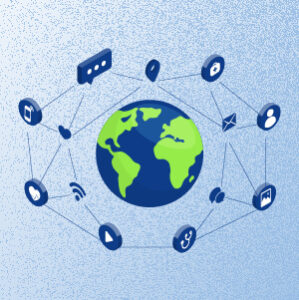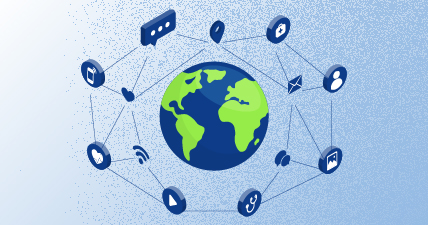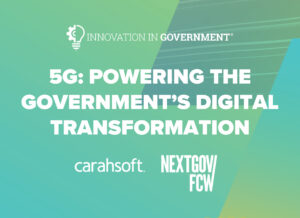The COVID-19 pandemic caught the world by surprise. Slow reaction time, limited outreach capability and antiquated systems delivered a response that was not as effective or as agile as it could have been. Decades of infrastructure designed around in-person interactions were suddenly useless.
In efforts to maintain continuity of government, agencies worked overtime to pivot away from in-person interactions and moved to digital infrastructure. Changes ranged from small (accepting e-signatures) to large (tele-social care and moving drivers’ license applications online).
COVID-19 will pass eventually, but will we be prepared for the next national emergency? Technology and big data have played a major role in government response—and will probably play a similar role for whatever comes next.
 5G will provide the platform for accelerated response execution. The widespread deployment of the communications standard will change how we approach resiliency, response and health care. It will enable everyone—from citizen to agency to first responder—to prepare and respond to the next health care catastrophe.
5G will provide the platform for accelerated response execution. The widespread deployment of the communications standard will change how we approach resiliency, response and health care. It will enable everyone—from citizen to agency to first responder—to prepare and respond to the next health care catastrophe.
How 5G will impact the next pandemic
COVID-19 provided a glimpse into how 5G will be used for the next health crisis. The technology is still in the growth stage and wasn’t ready to be fully leveraged in 2020. However, it provided a roadmap of where responses may be going. Future pandemics will be marked by connectivity and an abundance of data.
For the general public, being better connected will be a bigger factor:
- Better connected to work and school – For some, the shift to remote work was simple. For others, especially in areas where broadband speeds are limited, it was a larger issue.
- Better connected to healthcare – Telemedicine, already gaining ground, will be more widespread.
- Better connected to resources – Supply chains will make better use of automation and reduce person-to-person contact.
5G will help create parity of access and deliver a similar experience to all citizens.
But for public sector organizations, the next pandemic response will be marked by how many more tools government agencies and health care providers have at their disposal and how quickly information is shared. For example:
- Tracking virus spread – From connected cars to wearable devices, 5G technology will make the Internet of Things (IoT) devices more ubiquitous. Sensor technology will be more advanced and come in a more ubiquitous footprint. 5G will also make it easier to track patient movements and dynamics. Doctors will know where infected patients have been and who they’ve interacted with, just by using data streamed by devices over 5G networks.
- Remote diagnosis and care – Rural areas with reduced internet access have been at a disadvantage. Without the free flow of information that urban areas enjoy, rural health care workers work without the best tools. 5G will bridge this divide and enable remote health care. Public health bodies will have access to the latest data and applications no matter where they are.
- Virtual reality surgical procedures – Surgeons will have the capacity to train and even perform procedures without being in the same room as the patient. Expert care will no longer be constrained by geography.
- Citizen Engagement – 5G has the ability to transform local and rural communities from digital “have nots” to smart cities. With the bandwidth reach also comes the government’s ability to reach into those communities, communicate and deliver services more directly to the citizen.
- AI predictions – Artificial Intelligence (AI) requires large amounts of bandwidth, which 5G will provide. AI will help governments make data-based decisions on everything from future spreads of a virus to potential cures. 5G will enable these systems that require huge amounts of data to operate at peak capacity and share findings with other organizations.
- Machine-to-machine communications – New IoT devices will continue to increase automation and make in-person communication optional. Autonomous vehicles, smart cities and drones will aid response capabilities. Governments will also be better positioned to be notified of public health issues (pandemics included) and respond quickly.
5G technology is here. The public sector—from municipal to federal—stands to benefit, with new and better ways to serve customers and meet missions.
Carahsoft can be your guide through the transition. We partner with some of the world’s leading technology providers to provide white-glove services and solutions designed for your specific needs. From initial setup to optimization, Carahsoft will connect you with solutions providers to prepare you for what comes next.







